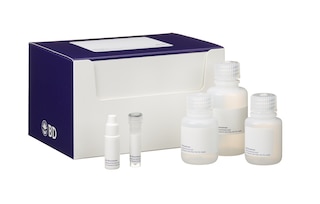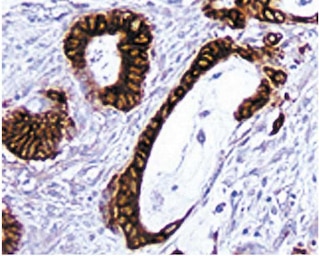-
Training
- Flow Cytometry Basic Training
-
Product-Based Training
- BD FACSDiscover™ S8 Cell Sorter Product Training
- Accuri C6 Plus Product-Based Training
- FACSAria Product Based Training
- FACSCanto Product-Based Training
- FACSLyric Product-Based Training
- FACSMelody Product-Based Training
- FACSymphony Product-Based Training
- HTS Product-Based Training
- LSRFortessa Product-Based Training
- Advanced Training
-
- BD FACSDiscover™ S8 Cell Sorter Product Training
- Accuri C6 Plus Product-Based Training
- FACSAria Product Based Training
- FACSCanto Product-Based Training
- FACSLyric Product-Based Training
- FACSMelody Product-Based Training
- FACSymphony Product-Based Training
- HTS Product-Based Training
- LSRFortessa Product-Based Training
- United States (English)
-
Change country/language
Old Browser
This page has been recently translated and is available in French now.
Looks like you're visiting us from {countryName}.
Would you like to stay on the current country site or be switched to your country?




Immunohistochemical analysis of CD31 expression on human endothelial cells. Frozen sections of normal human thymus were stained with Purified Mouse Anti-Human CD31 (Cat. No. 550389/555444), then visualized with Biotin Goat Anti-Mouse Ig (Multiple Adsorption) (Cat. No. 550337) and Streptavidin HRP (Cat. No. 550946) using the DAB Substrate Kit (Cat. No. 550880). The endothelial cells of the blood vessels can be identified by the intense brown labeling of their cell surface membranes (20X magnification).


BD Pharmingen™ Purified Mouse Anti-Human CD31

Regulatory Status Legend
Any use of products other than the permitted use without the express written authorization of Becton, Dickinson and Company is strictly prohibited.
Preparation And Storage
Recommended Assay Procedures
Immunohistochemistry: For optimal indirect immunohistochemical staining, investigators are encouraged to titrate the Mouse Anti-Human CD31 antibody (clone WM59) (suggested starting dilution of 1:10 to 1:50) and visualize staining via a three-step staining procedure in combination with Biotin Goat Anti-Mouse Ig (Cat. No. 550337) as the secondary antibody and Streptravidin-HRP (Cat. No. 550946) using a DAB detection system (Cat. No. 550880). Alternatively, investigators may want to consider using the Anti-Mouse Ig HRP Detection Kit (Cat.No. 551011), which contains the biotinylated secondary antibody, antibody diluent, Streptavidin-HRP and DAB substrate.
Product Notices
- Since applications vary, each investigator should titrate the reagent to obtain optimal results.
- An isotype control should be used at the same concentration as the antibody of interest.
- Source of all serum proteins is from USDA inspected abattoirs located in the United States.
- Caution: Sodium azide yields highly toxic hydrazoic acid under acidic conditions. Dilute azide compounds in running water before discarding to avoid accumulation of potentially explosive deposits in plumbing.
- This antibody has been developed for the immunohistochemistry application. However, a routine immunohistochemistry test is not performed on every lot. Researchers are encouraged to titrate the reagent for optimal performance.
- Sodium azide is a reversible inhibitor of oxidative metabolism; therefore, antibody preparations containing this preservative agent must not be used in cell cultures nor injected into animals. Sodium azide may be removed by washing stained cells or plate-bound antibody or dialyzing soluble antibody in sodium azide-free buffer. Since endotoxin may also affect the results of functional studies, we recommend the NA/LE (No Azide/Low Endotoxin) antibody format, if available, for in vitro and in vivo use.
- Species cross-reactivity detected in product development may not have been confirmed on every format and/or application.
- Please refer to www.bdbiosciences.com/us/s/resources for technical protocols.
Companion Products






The WM59 monoclonal antibody specifically binds to platelet endothelial cell adhesion molecule-1, (PECAM-1, PECAM1), which is also known as GPIIA', or EndoCAM. CD31 is a 130 kDa type I transmembrane glycoprotein that belongs to the Ig gene superfamily. CD31 has wide tissue distribution and is expressed on platelets, monocytes, granulocytes, NK cells, T cell subsets, and in high amounts on endothelial cells. CD31 functions as a vascular endothelial cell adhesion molecule and is involved in the transendothelial migration of leucocytes in inflammatory responses. It might be involved in thrombosis, angiogenesis, and wound healing. The WM59 appears to recognize an epitope proximal to extracellular domain 2 of CD31.
Clone WM59 also cross-reacts with peripheral blood platelets and leukocytes of baboon, and both rhesus and cynomolgus macaque monkeys. The staining intensity of WM59+ platelets is similiar to that observed with peripheral blood platelets from normal human donors. Lymphocytes, monocytes, and granulocytes react less with WM59 than normal human leukocytes.
Development References (3)
-
DeLisser HM, Newman PJ, Albelda SM. Platelet endothelial cell adhesion molecule (CD31). Curr Top Microbiol Immunol. 1993; 184:37-45. (Biology). View Reference
-
Muller WA, Weigl SA, Deng X, Phillips DM. PECAM-1 is required for transendothelial migration of leukocytes. J Exp Med. 1993; 178(2):449-460. (Biology). View Reference
-
Vaporciyan AA, DeLisser HM, Yan HC, et al. Involvement of platelet-endothelial cell adhesion molecule-1 in neutrophil recruitment in vivo.. Science. 1993; 262(5139):1580-2. (Biology). View Reference
Please refer to Support Documents for Quality Certificates
Global - Refer to manufacturer's instructions for use and related User Manuals and Technical data sheets before using this products as described
Comparisons, where applicable, are made against older BD Technology, manual methods or are general performance claims. Comparisons are not made against non-BD technologies, unless otherwise noted.
For Research Use Only. Not for use in diagnostic or therapeutic procedures.
Report a Site Issue
This form is intended to help us improve our website experience. For other support, please visit our Contact Us page.